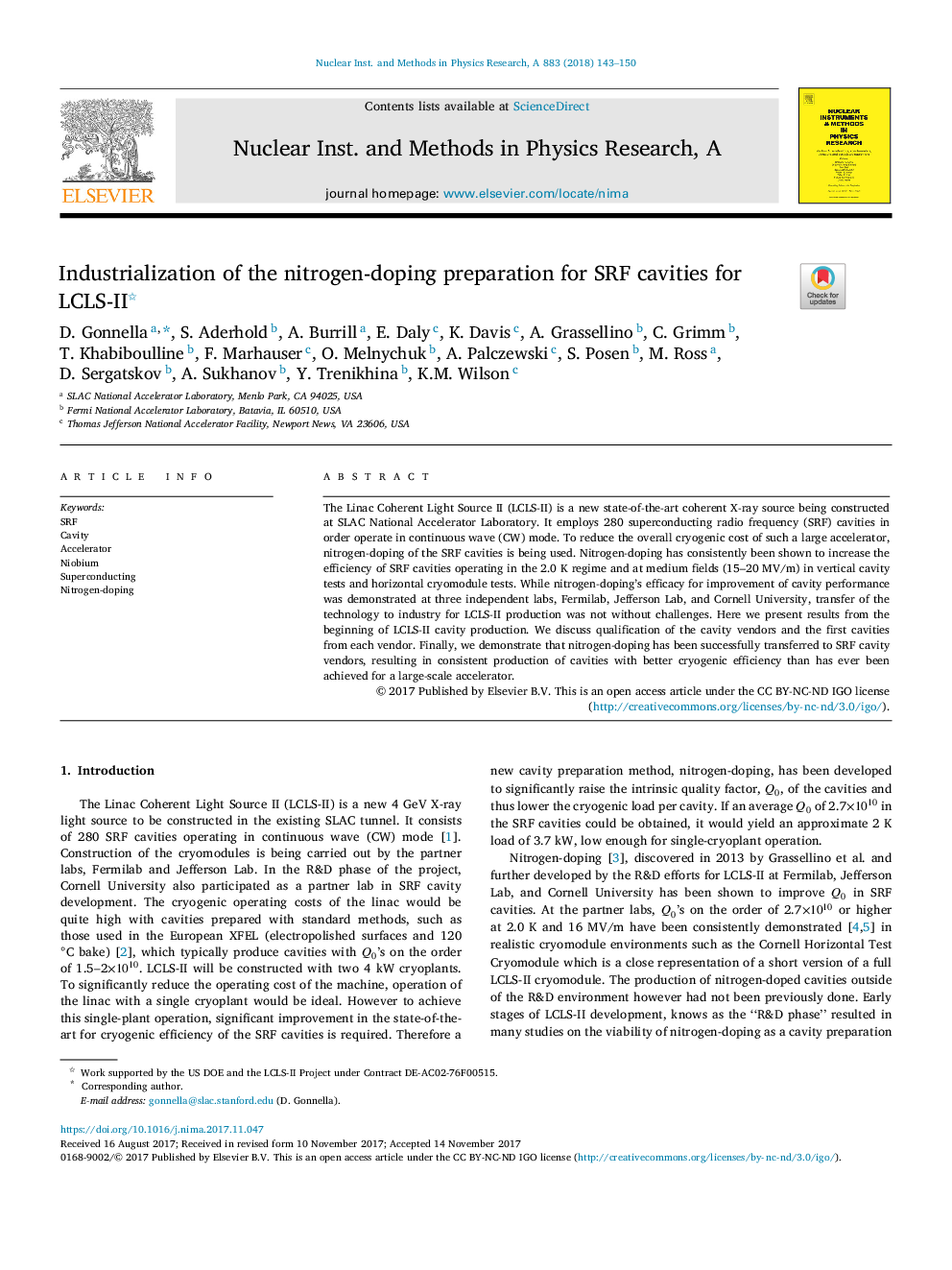| Article ID | Journal | Published Year | Pages | File Type |
|---|---|---|---|---|
| 8166980 | Nuclear Instruments and Methods in Physics Research Section A: Accelerators, Spectrometers, Detectors and Associated Equipment | 2018 | 8 Pages |
Abstract
The Linac Coherent Light Source II (LCLS-II) is a new state-of-the-art coherent X-ray source being constructed at SLAC National Accelerator Laboratory. It employs 280 superconducting radio frequency (SRF) cavities in order operate in continuous wave (CW) mode. To reduce the overall cryogenic cost of such a large accelerator, nitrogen-doping of the SRF cavities is being used. Nitrogen-doping has consistently been shown to increase the efficiency of SRF cavities operating in the 2.0Â K regime and at medium fields (15-20Â MV/m) in vertical cavity tests and horizontal cryomodule tests. While nitrogen-doping's efficacy for improvement of cavity performance was demonstrated at three independent labs, Fermilab, Jefferson Lab, and Cornell University, transfer of the technology to industry for LCLS-II production was not without challenges. Here we present results from the beginning of LCLS-II cavity production. We discuss qualification of the cavity vendors and the first cavities from each vendor. Finally, we demonstrate that nitrogen-doping has been successfully transferred to SRF cavity vendors, resulting in consistent production of cavities with better cryogenic efficiency than has ever been achieved for a large-scale accelerator.
Related Topics
Physical Sciences and Engineering
Physics and Astronomy
Instrumentation
Authors
D. Gonnella, S. Aderhold, A. Burrill, E. Daly, K. Davis, A. Grassellino, C. Grimm, T. Khabiboulline, F. Marhauser, O. Melnychuk, A. Palczewski, S. Posen, M. Ross, D. Sergatskov, A. Sukhanov, Y. Trenikhina, K.M. Wilson,
